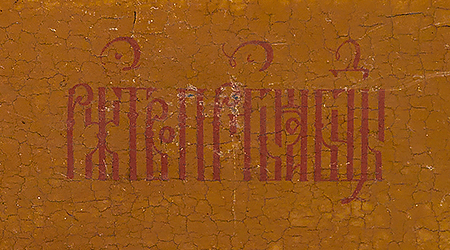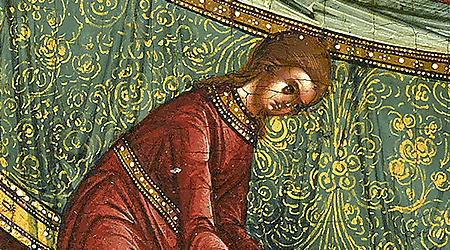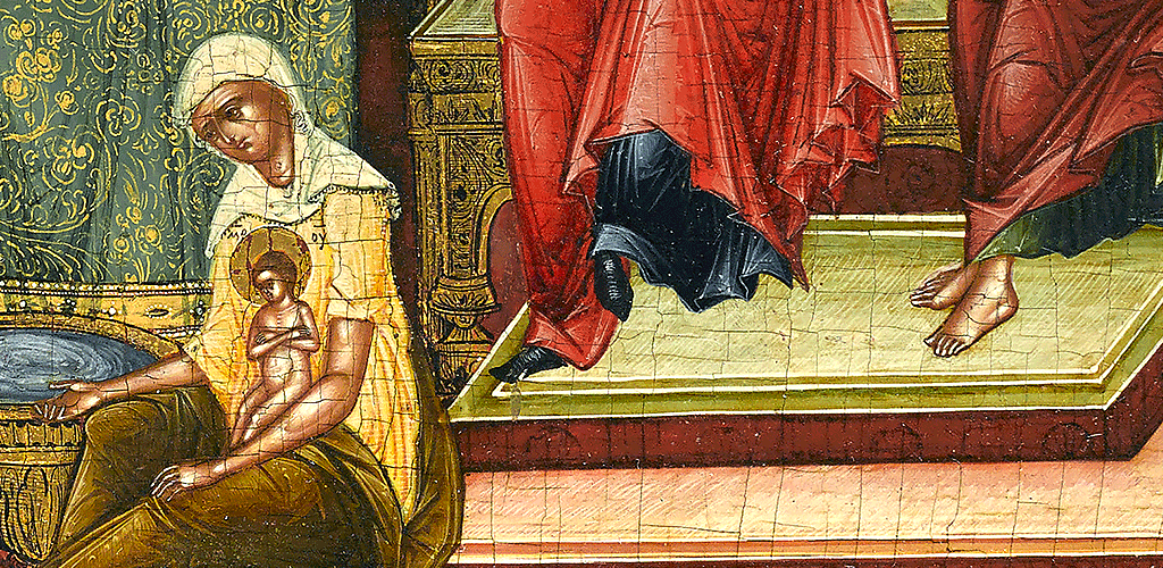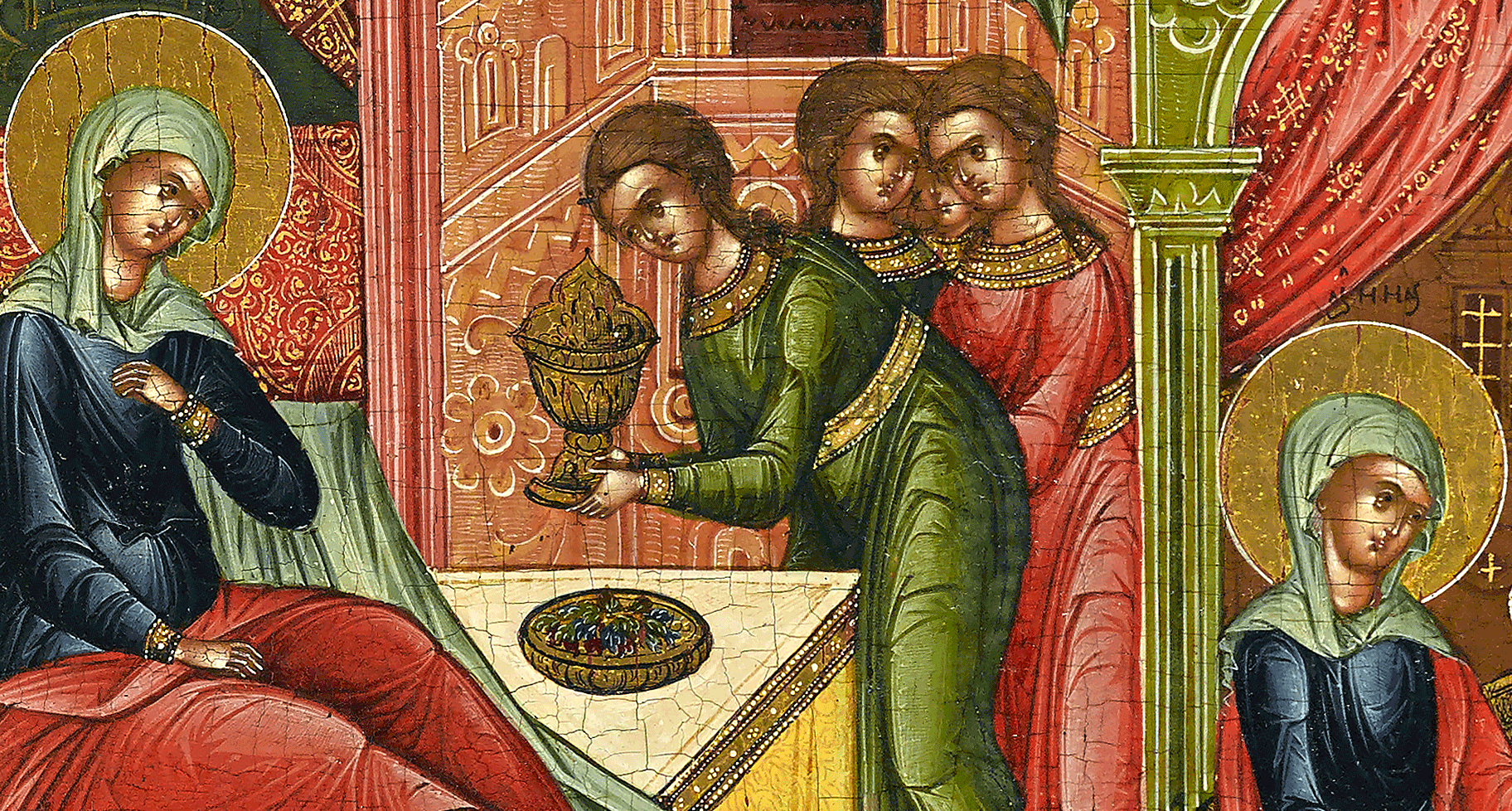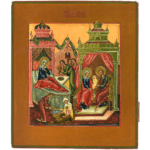Painted in the exquisite, highly detailed manner, the icon portrays St. Anna giving birth to the Virgin Mary. Shown against stylised architectural background the image depicts three episodes of the Life of the Theotokos: to the left is St. Anna half lying on a bed surrounded by servants; at the bottom left are the midwives washing the newly born Infant; on the right are St. Anna and St. Joachim, her husband, sitting next to each other and caressing their daughter.
The feast of the Nativity of the Mother of God, one of the Twelve Great Feasts, was established in Byzantium around the fifth century and is celebrated on 8th September. The birth and early life of the Virgin Mary is described in the Protoevangelium of James, a late 2nd-century apocryphal text. It tells the story of the elderly and righteous parents of Mary Joachim and Anna. The iconography of the feast is based on this account.
The earliest surviving representations of the feast date back to the 8th – 9th centuries and can be found in Santa Maria Antiqua, Santa Maria de Gradellis and Santa Saba in Rome. In Russia, the best-known of the earliest images of the subject are the frescoes of the Nativity of the Mother of God in the St. Sophia Cathedral in Kiev (the first half of the 11th century) and the murals of the Transfiguration Church of the Mirozhsky Convent (12th century).
